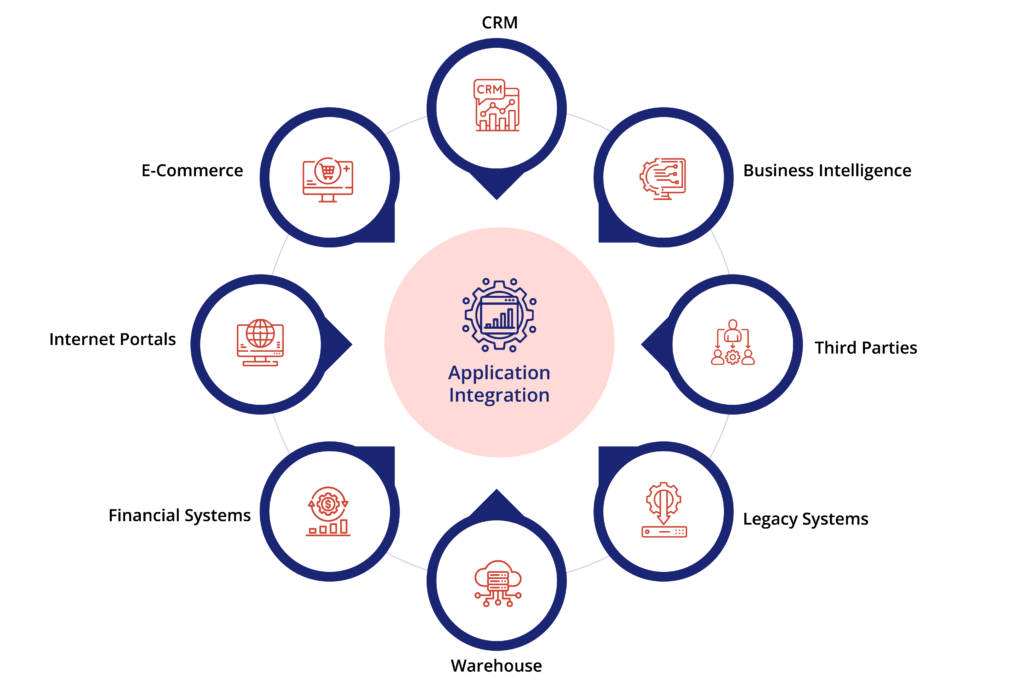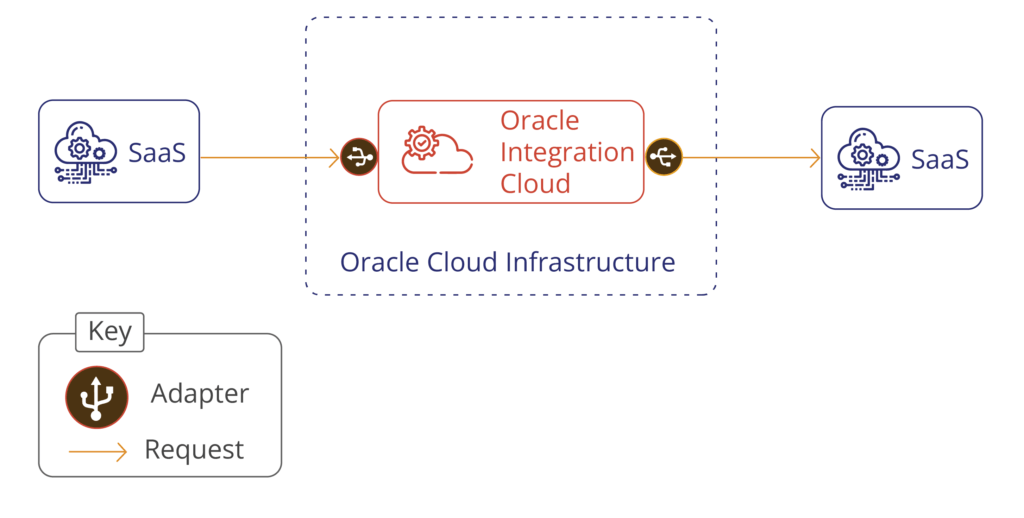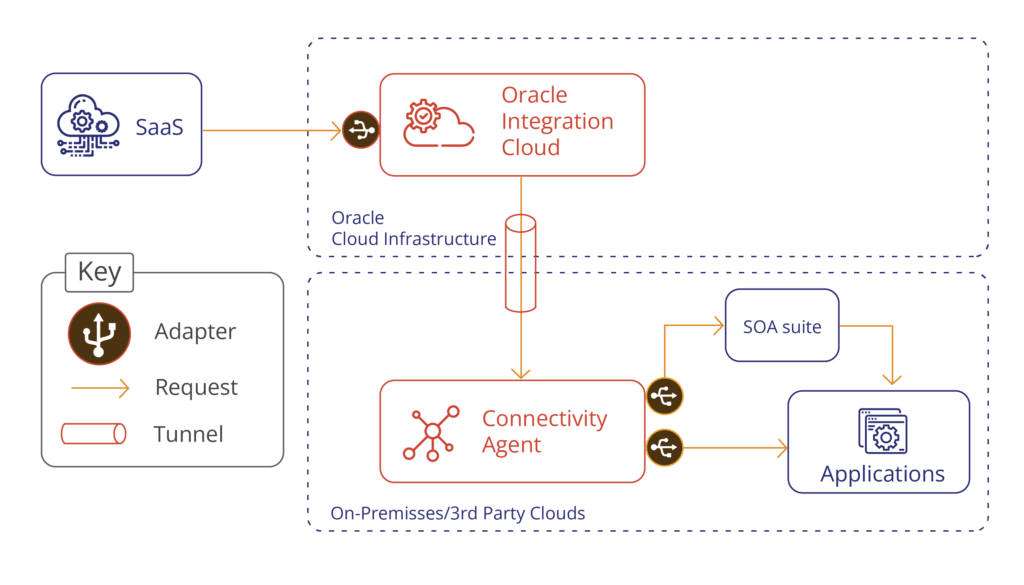Unlocking the future of business growth demands bold strategies, and the cloud serves as the gateway to success. According to McKinsey, prioritizing cloud integration has become a top agenda item for most Chief Information Officers in recent years as businesses look to embrace transformative solutions amid post-pandemic challenges such as supply-chain disruptions and labor availability issues.
The cloud addresses immediate concerns and offers enhanced flexibility, speed, and innovation, enabling organizations to revolutionize operations for sustained success in today’s tech-driven landscape.
In this context, businesses are increasingly relying on automation and cloud applications to drive efficiency, productivity, and connectivity. As the demand for seamless integration and enhanced data exchange becomes paramount, Oracle Integration Cloud (OIC) emerges as the ideal solution among various offerings.
This article delves into OIC’s key features, usage insights, and best practices, unlocking the door to organizational success in the ever-evolving business environment.

Oracle Integration Cloud: Understanding Its Inner Workings
In brief, Oracle Integration Cloud (OIC) is a dynamic cloud platform that unites on-premises and cloud applications seamlessly. Empowering enterprises with seamless integration, API management, and business process automation, including RPA, the Oracle Integration Cloud platform stands as a versatile solution. It facilitates the effortless design, construction, deployment, and management of integrations in the cloud.
SaaS to SaaS Integration

SaaS To On-Prem Integration

Moreover, this platform extends a myriad of benefits to businesses of all sizes—small, medium, and large. In contrast to traditional on-premises solutions, users can enjoy reduced costs, expedited deployment processes, and streamlined maintenance.
How to Navigate the Oracle Integration Cloud
To fully harness the potential of Oracle Integration Cloud (OIC), enterprises need to have a comprehensive understanding of its features and capabilities. The first step is to familiarize themselves with the supported integration patterns, which include point-to-point, publish/subscribe, request/response, and data transformation. Each pattern has distinct benefits and aligns with specific use cases, so it’s important to choose the right one based on business requirements.
Following the pattern selection, configuring connection settings becomes imperative. This process often entails choosing the appropriate protocol—such as HTTP, FTP, or SFTP—and configuring requisite security and authentication parameters.
Subsequently, orchestrating the data flow between integrated systems, a critical process known as orchestration is paramount for a seamless integration journey.
Oracle Integration Cloud Feature Blueprint
The Oracle Integration Cloud presents an array of functionalities that establish it as a premier choice for businesses seeking seamless integration. Let’s delve into a closer examination of these key features:
- Intuitive visual design: The platform is equipped with an intuitive visual design that enables effortless creation, management, and monitoring of various integrations across applications, systems, and services.
- Pre-built adapters: OIC provides users with pre-built adapters for the most commonly used cloud and on-premise applications, streamlining the connection process and enhancing business process efficiency.
- Scalable and secure architecture: Built upon a high-performance, scalable, and secure foundation, OIC guarantees the seamless and reliable operation of integrations.
- Low-code custom integrations: One of the standout features of this platform is its low-code interface, which allows users to easily create custom integrations using drag-and-drop tools and pre-built templates without extensive development experience.
- Integration analytics: The OIC platform also equips users with integration analytics, delivering pertinent insights into business processes and supporting data-driven decisions for operational optimization.
- API management: The Oracle Integration Cloud platform provides users with dynamic and intuitive API management services, facilitating the seamless creation, publication, and management of APIs for applications.
Furthermore, this particular platform feature ensures secure data and service exposure to developers and partners, enabling the development of innovative solutions.
Proven Oracle Integration Cloud Best Practices
- Establish foundation for reusability: When building integrations, ensure the components and patterns are reusable! This clever move will not only save time and effort now but establish a foundation for an efficient future. Imagine these components become part of a go-to toolkit that can be easily shared across various integrations. Result? No more duplication headaches and a streamlined maintenance process.
- Configure connection and adapter resilience: Enhance integration reliability by smartly configuring the connection resilience settings, ensuring it can tackle temporary connection hiccups or system unavailability. This ensures the integrations are uninterrupted even when faced with challenges.
- Integrate error handling and monitoring processes: Incorporate robust error handling in integrations by setting up real-time alerts and monitoring. By doing this, users will be notified of any potential problems in real-time, enabling agile response to issues.
- Enforce security and authentication protocols: Leverage secure authentication mechanisms like OAuth, API keys, or other robust methods to fortify integrations, safeguard sensitive data, and guarantee authorized access.
- Implement throttle and rate limiting: When integrating with external systems, consider incorporating throttle and rate-limiting mechanisms. These functionalities help control the flow of data between systems and can prevent the target system from being overwhelmed by excessive requests.
- Ensure workflows are optimized: Optimize workflows by incorporating version control for integration artifacts. This will enable easy tracking of changes, ensuring a controlled and organized development process with effective management of updates.
- Maintain thorough and consistent documentation: Maintain the peak performance of your integrations through thorough and current documentation. Include up-to-date documentation on the design decisions, business logic, dependencies, and other critical information for future references and seamless troubleshooting.
- Conduct testing and staging environments: Prior to deploying integrations into production, ensure comprehensive testing. Utilize staging environments to mirror production setups, ensuring the validation of integrations in a controlled setting.
- Assess optimization and performance: Regularly assess integration performance for optimization and efficiency through consistent monitoring. Keep an eye on resource usage and response times to spot potential bottlenecks early on and enhance the overall system performance.
- Stay up-to-date on the latest happenings: Stay in the know and keep up with Oracle’s latest updates, enhancements, and best practices by regularly checking their official documentation and community forums and pages to ensure you’re always up-to-date!
Conclusion
In summary, Oracle Integration Cloud emerges as an indispensable platform for businesses in pursuit of seamless system integration, promising significant long-term time and cost savings. Adhering to best practices is imperative to enhance the integration process, resulting in increased efficiency and organization-wide expenditure reduction.
Embark on a journey to explore the potential benefits of Oracle Integration Cloud. Witness your business flourish by connecting with our experts today.



